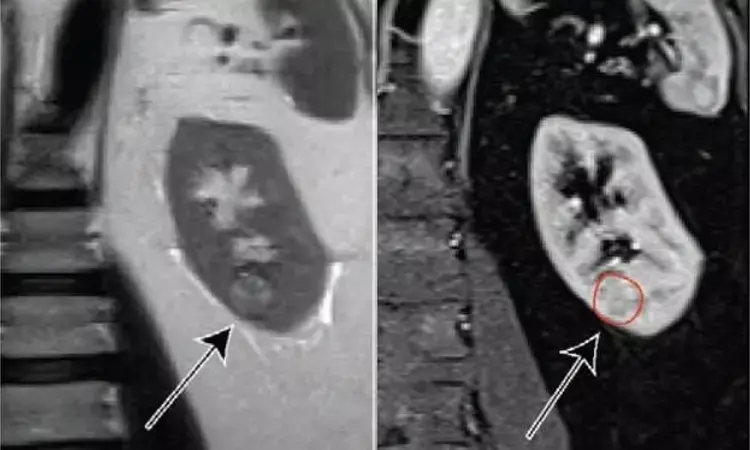- Home
- Medical news & Guidelines
- Anesthesiology
- Cardiology and CTVS
- Critical Care
- Dentistry
- Dermatology
- Diabetes and Endocrinology
- ENT
- Gastroenterology
- Medicine
- Nephrology
- Neurology
- Obstretics-Gynaecology
- Oncology
- Ophthalmology
- Orthopaedics
- Pediatrics-Neonatology
- Psychiatry
- Pulmonology
- Radiology
- Surgery
- Urology
- Laboratory Medicine
- Diet
- Nursing
- Paramedical
- Physiotherapy
- Health news
- Fact Check
- Bone Health Fact Check
- Brain Health Fact Check
- Cancer Related Fact Check
- Child Care Fact Check
- Dental and oral health fact check
- Diabetes and metabolic health fact check
- Diet and Nutrition Fact Check
- Eye and ENT Care Fact Check
- Fitness fact check
- Gut health fact check
- Heart health fact check
- Kidney health fact check
- Medical education fact check
- Men's health fact check
- Respiratory fact check
- Skin and hair care fact check
- Vaccine and Immunization fact check
- Women's health fact check
- AYUSH
- State News
- Andaman and Nicobar Islands
- Andhra Pradesh
- Arunachal Pradesh
- Assam
- Bihar
- Chandigarh
- Chattisgarh
- Dadra and Nagar Haveli
- Daman and Diu
- Delhi
- Goa
- Gujarat
- Haryana
- Himachal Pradesh
- Jammu & Kashmir
- Jharkhand
- Karnataka
- Kerala
- Ladakh
- Lakshadweep
- Madhya Pradesh
- Maharashtra
- Manipur
- Meghalaya
- Mizoram
- Nagaland
- Odisha
- Puducherry
- Punjab
- Rajasthan
- Sikkim
- Tamil Nadu
- Telangana
- Tripura
- Uttar Pradesh
- Uttrakhand
- West Bengal
- Medical Education
- Industry
Clear cell likelihood score derived from MRI, correlates with renal mass growth rate: Study

non-invasive clear cell likelihood score (ccLS)--derived from MRI--correlates with the growth rate of small renal masses
Leesburg: According to ARRS' American Journal of Roentgenology (AJR), the standardized non-invasive clear cell likelihood score (ccLS)--derived from MRI--correlates with the growth rate of small renal masses (cT1a, <4 cm) and may help guide personalized management.
Extracted from clinical reports, "the ccLS scores the likelihood that the small renal mass represents clear cell renal cell carcinoma, from 1 (very unlikely) to 5 (very likely)," explained corresponding author Ivan Pedrosa from the University of Texas Southwestern Medical Center at Dallas. "Small renal masses with lower ccLS may be considered for active surveillance, whereas small renal masses with higher ccLS may warrant earlier intervention."
Pedrosa and colleagues' retrospective study included consecutive small renal masses assigned a ccLS on clinical MRI examinations performed between June 2016 and November 2019 at an academic tertiary-care medical center or its affiliated safety net hospital system. Tumor size measurements were extracted from available prior and follow-up cross-sectional imaging examinations, through June 2020.
Among 389 small renal masses in 339 patients (198 men, 141 women; median age, 65 years) on active surveillance that were assigned a ccLS on clinical MRI examinations, those with ccLS4-5 grew significantly faster (9% diameter, 29% volume yearly) than those with ccLS1-2 (5% diameter, p<.001; 16% volume, p<.001) or ccLS3 (4% diameter, p<.001; 15% volume, p<.001).
Noting that the lack of validated imaging markers to characterize biologic aggressiveness of small renal masses hinders medical decision making among available initial management strategies, "growth is associated with ccLS in small renal masses," the authors of this AJR article reiterated, "with higher ccLS correlating with faster growth."
For further references log on to:
Dr Kamal Kant Kohli-MBBS, DTCD- a chest specialist with more than 30 years of practice and a flair for writing clinical articles, Dr Kamal Kant Kohli joined Medical Dialogues as a Chief Editor of Medical News. Besides writing articles, as an editor, he proofreads and verifies all the medical content published on Medical Dialogues including those coming from journals, studies,medical conferences,guidelines etc. Email: drkohli@medicaldialogues.in. Contact no. 011-43720751


